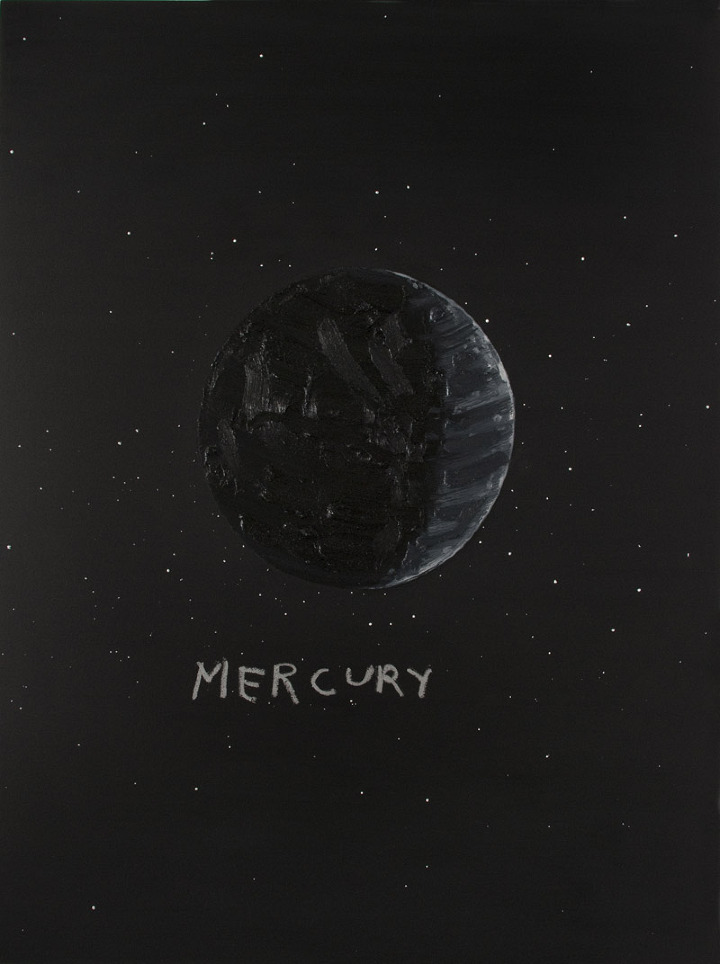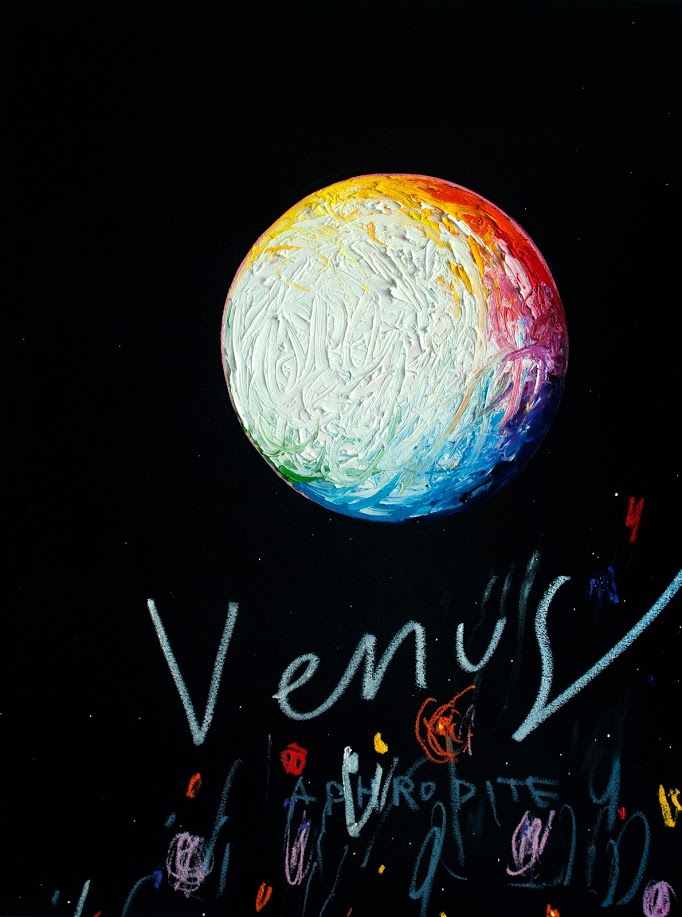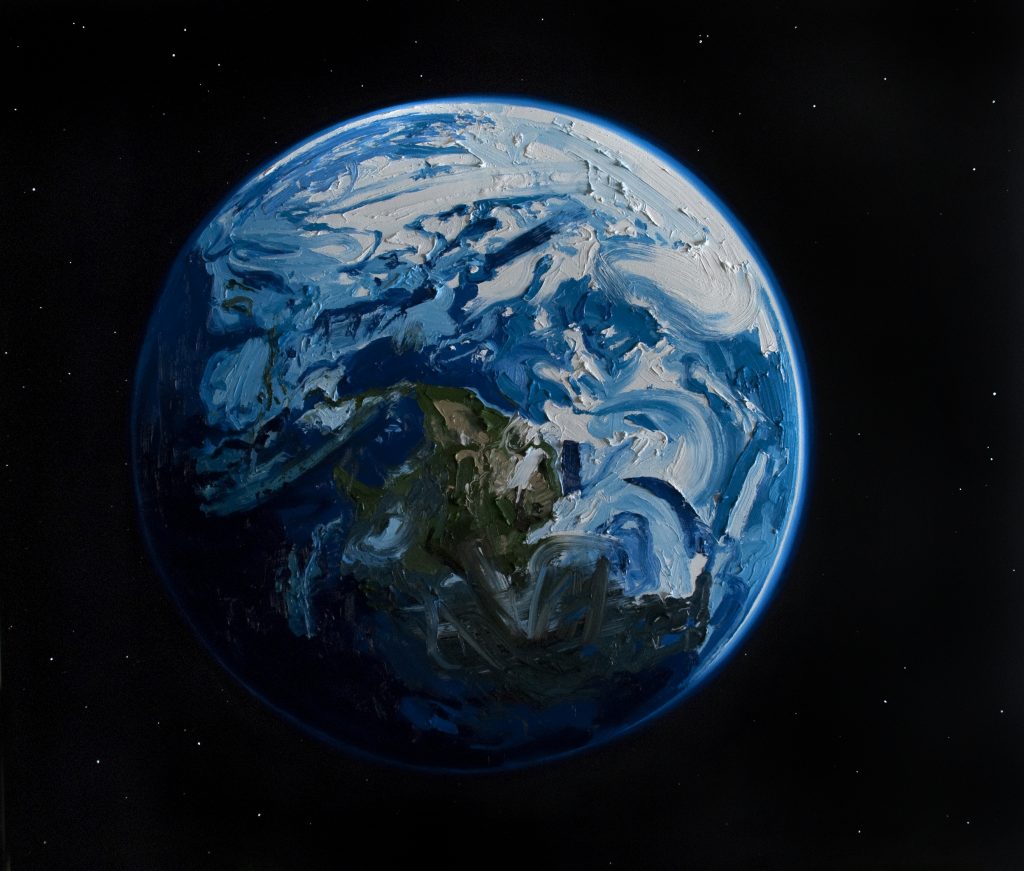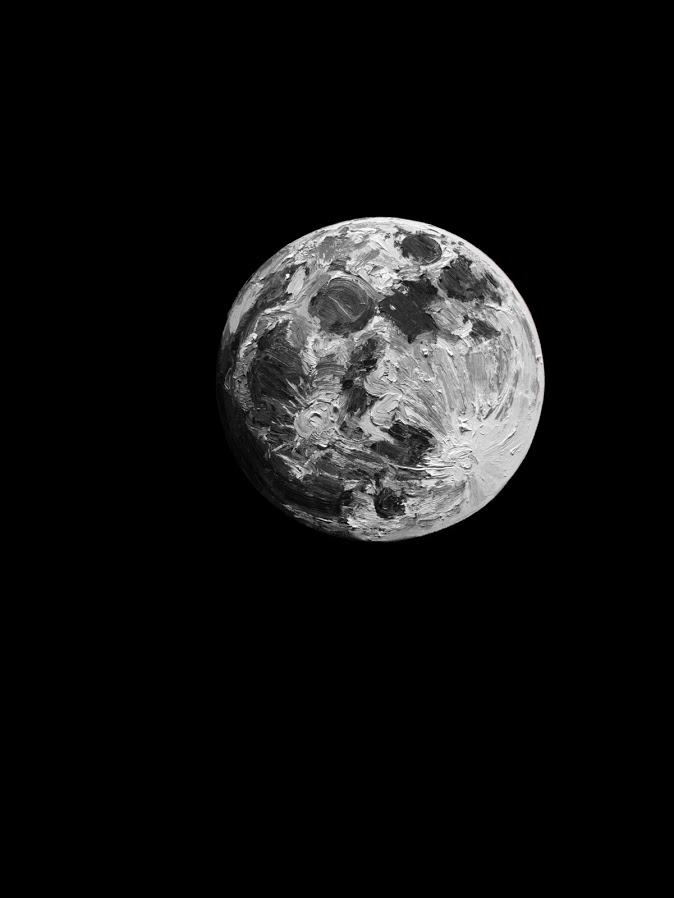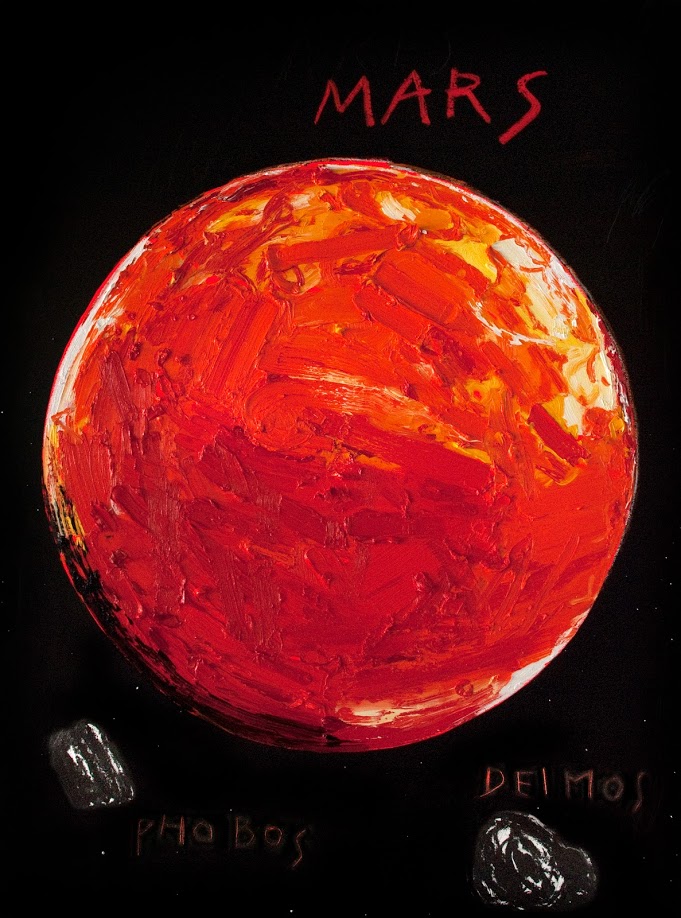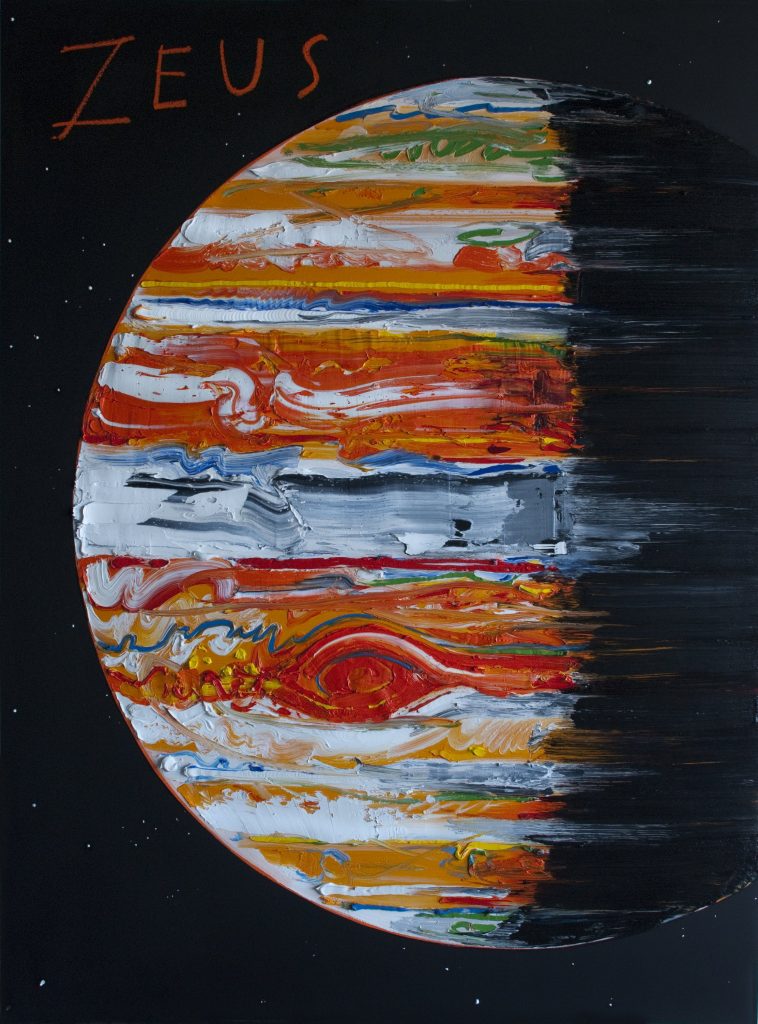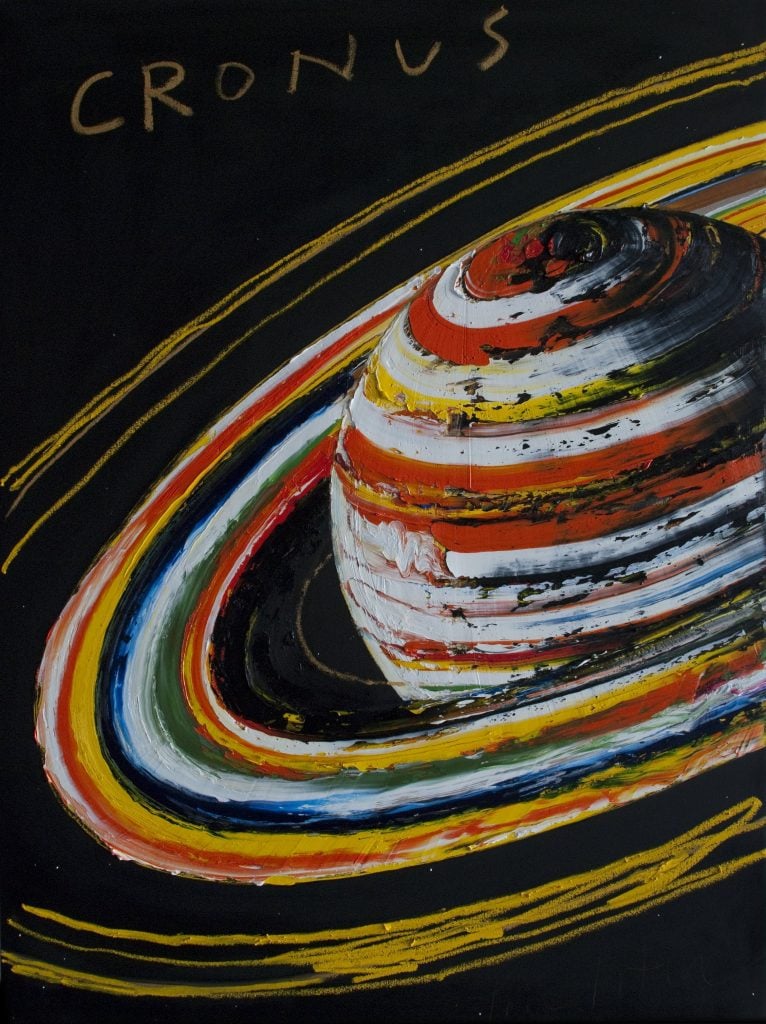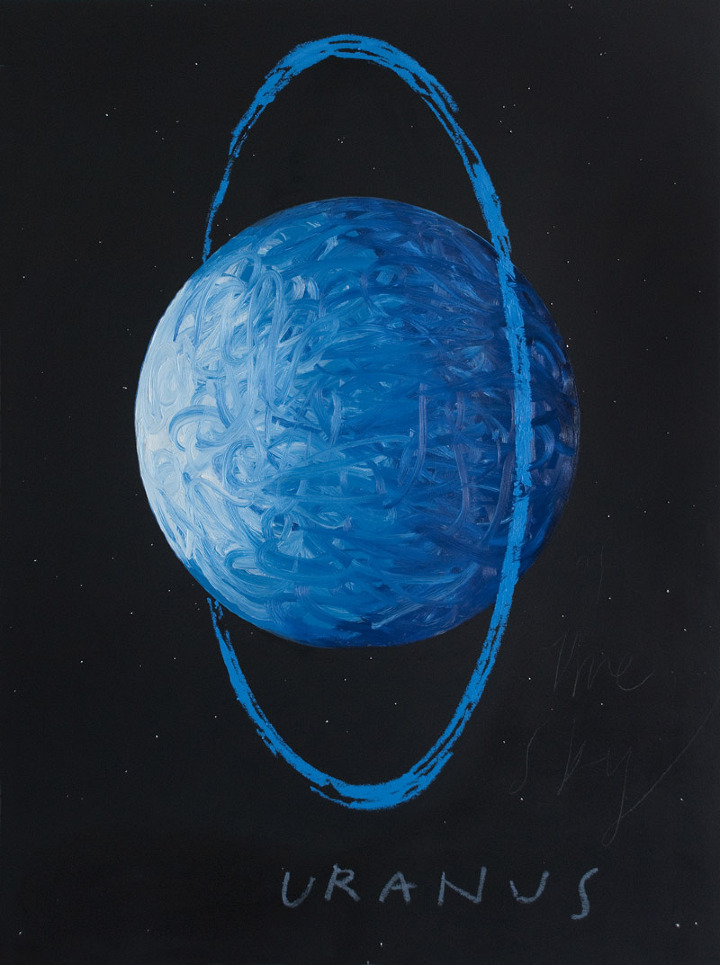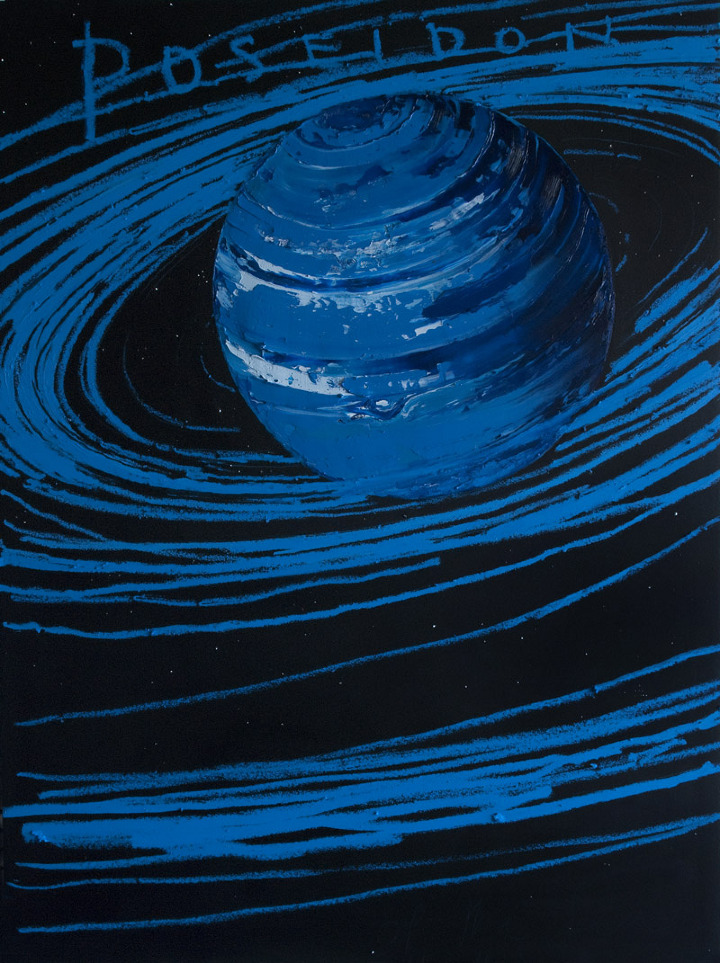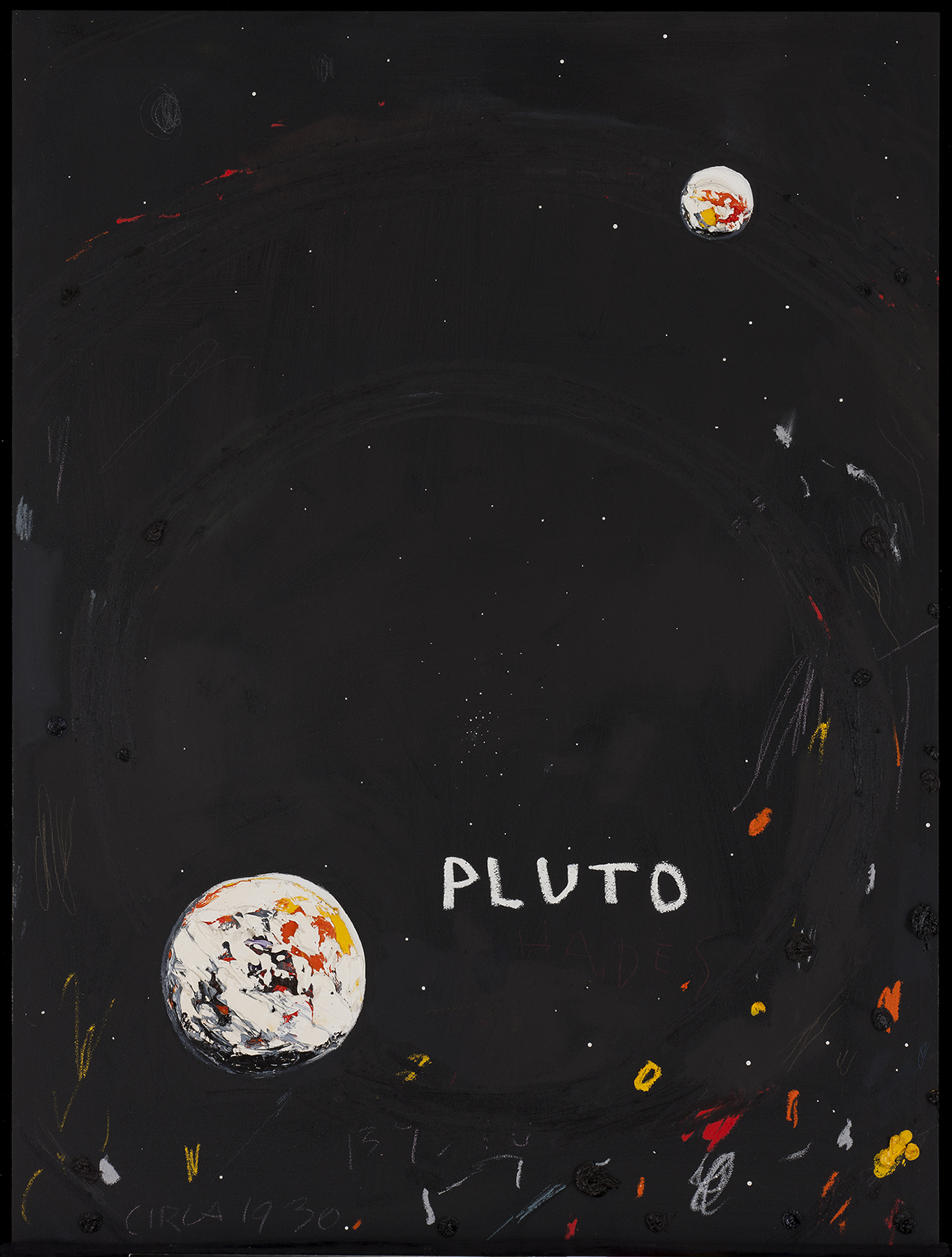The space paintings began seven years ago when I was up late with a friend and we watched as a brilliant moon rose up in the sky. I had an old telescope in the basement, so I brought it out, dusted it off and pointed it at the moon. The physicality and volume of the sphere, as well as the perfect simplicity of its shape really struck me. At the time I’d recently been in a motorcycle crash in India, and I was looking for a subject matter that would calm me down, suggest a larger order and expand my sense of reality. Looking up at the night sky, I realized that my subject might be found out there.
In the way that I’ve painted portraits of people that are close to me, with these paintings I wanted to create a series of portraits of each of the planets. To offer a way to get up close to something that seems far away and unfamiliar. In the way that I accentuate colours and forms in my portraits of people to define their character, I did the same here with the large scale planets. I wanted to paint the world, not as a photographic likeness but the way it appears in your mind when you think about how it works.
I approached the work just like I was making a portrait of a person but here I was working with a subject at the planetary scale. Reality acts differently at this scale, everything starts gravitating towards forming into vast spheres. I found this to be very calming and interesting in it’s order. Something we could all agree on. As I began painting I used known science-based observation to inform the paintings. In a way, the project became what we know and what we don’t know about the planets.
At the same time I also began playing with switching between the Greek and Roman naming of the planets; Jupiter to Zeus for example; Saturn to Cronus. I found there were interesting parallels between the mythological stories and the geological reality of the planets.
I’ll briefly go through the paintings and say a bit about each:
Mercury
In Greek mythology Hermes is the messenger of the gods. Being the closest to the sun and with no atmosphere it has the greatest range in temperature of any of the planets. It also has no known satellites (moons) and is the smallest of the planets in our solar system.
Venus
Venus is the second planet from the Sun. It is the second brightest natural object in the night sky after the Moon. It is named after the Roman goddess of love and beauty, comparable to the Greek, Aphrodite. As one of the brightest objects in the sky, Venus has been a major fixture in human culture for as long as records have existed. It also has no known moons.
Earth
The planet that needs no introduction. I wanted the painting to be about our sense of the Earth as a planet, not as a link to any ideas about the map of the Earth. I painted the Earth upside down to how we often see it on maps. I didn’t want any country or place to get priority over another.
The atmosphere in the painting of the Earth for me, becomes one of the highlights.
Moon
I painted the moon from the vantage-point that we see it at from North America. I kept this painting very simple, no stars or text. Just the familiar moon on black.
Mars
Often referred to as the “Red Planet” because the reddish iron oxide prevalent on its surface gives it a reddish appearance. Mars has the highest volcanoes in the solar system and has two relatively small natural moons, Phobos and Deimos, which orbit close to the planet. They are named after the characters Phobos (panic/fear) and Deimos (terror/dread), who, in Greek mythology, accompanied their father Ares, god of war, into battle. Mars was the Roman counterpart of Ares.
Jupiter
Jupiter is the largest of the planets in the solar system. It should be mentioned that although I see the series as a whole, the planets in the paintings are not proportionate in terms of size to one another. If they were, Jupiter would have to be about the size of Glenbow Museum.
Zeus is the Greek counterpart to Jupiter in Roman mythology so there becomes this comparison between Zeus, god of thunder, lightning and weather, and Jupiter the planet that has some of the most exciting and powerful storms in the solar system.
Saturn
The Greek Cronus, equilvalent to Roman Saturn, overthrew his father Uranus and then married his sister Rhea. Because he was fated to be overcome by one of his male children, Cronus swallowed all of them as soon as they were born – perhaps comparable to the moons and rings of Saturn the planet, bound to be swallowed up by the gravity of the giant planet.
Uranus
Uranus in Greek mythology is a personification of heaven or the sky, the most ancient of the Greek gods and first ruler of the universe. Uranus was king but was overthrown and castrated by his own son Cronus – the Greek equivalent to Saturn. In comparison, Uranus the planet is kicked over on its side, rolling along through the solar system while the other planets spin like tops. The prevailing theory about the planet Uranus is that some major cataclysmic event smashed the planet over onto its side.
Neptune
Neptune was the god of freshwater and the sea in Roman religion. He is the counterpart of the Greek god Poseidon. In the Greek-influenced tradition, Neptune was the brother of Jupiter and Pluto; the brothers presided over the realms of Heaven, the earthly world, and the Underworld.
Neptune the planet is almost entirely blue. When scientists saw the first image of Neptune taken In the summer of 1989, from NASA’s Voyager 2 they at first thought the planet to look similar to the oceans of Earth.
Pluto & Charon
Recently re-categorized as a dwarf planet, Pluto is part of the larger Kuiper belt of smaller bodies and asteroids. It has an unusual relationship with its moon Charon as the centre of gravity is outside of both bodies. So the two are held in a gravitational dance around each other, with smaller moons spread farther out. For me the dwarf planet represents an object on the very farthest reaches of the solar system: a kind of gateway to deep space.
When I painted this painting of Pluto there were no high definition images of the planet at that time. The best photographic image, taken in 2011, was a blurred-out orb. That’s it. I had to guess what it looked like as I painted it. Several years after I made the painting, the New Horizons spacecraft became the first spacecraft to fly by Pluto. It sent back the first images of the huge ‘heart’ shape on the surface of Pluto – Something I never could have anticipated.
In Greek mythology, Pluto was the ruler of the underworld. The earlier name for the god was Hades, which became more common as the name of the underworld itself. Charon is the ferryman of Hades who carries souls of the newly deceased across the rivers that divide the world of the living from the world of the dead.
Image Credits:
Erik Olson in his studio. Courtesy of the Artist.
Erik Olson, Mercury, 2011, Private Collection
Erik Olson, Venus, 2011, Private Collection
Erik Olson, Earth, 2011, Private Collection
Erik Olson, Moon, 2018, Collection of the Artist
Erik Olson, Mars, Phobos & Deimos, 2011, Private Collection
Erik Olson, Jupiter, 2011, Private Collection
Erik Olson, Saturn, 2011, Private Collection
Erik Olson, Uranus, 2011, Private Collection
Erik Olson, Neptune, 2011, Collection of the Alberta Foundation for the Arts
Erik Olson, Pluto & Charon, 2011, Collection of the Artist
